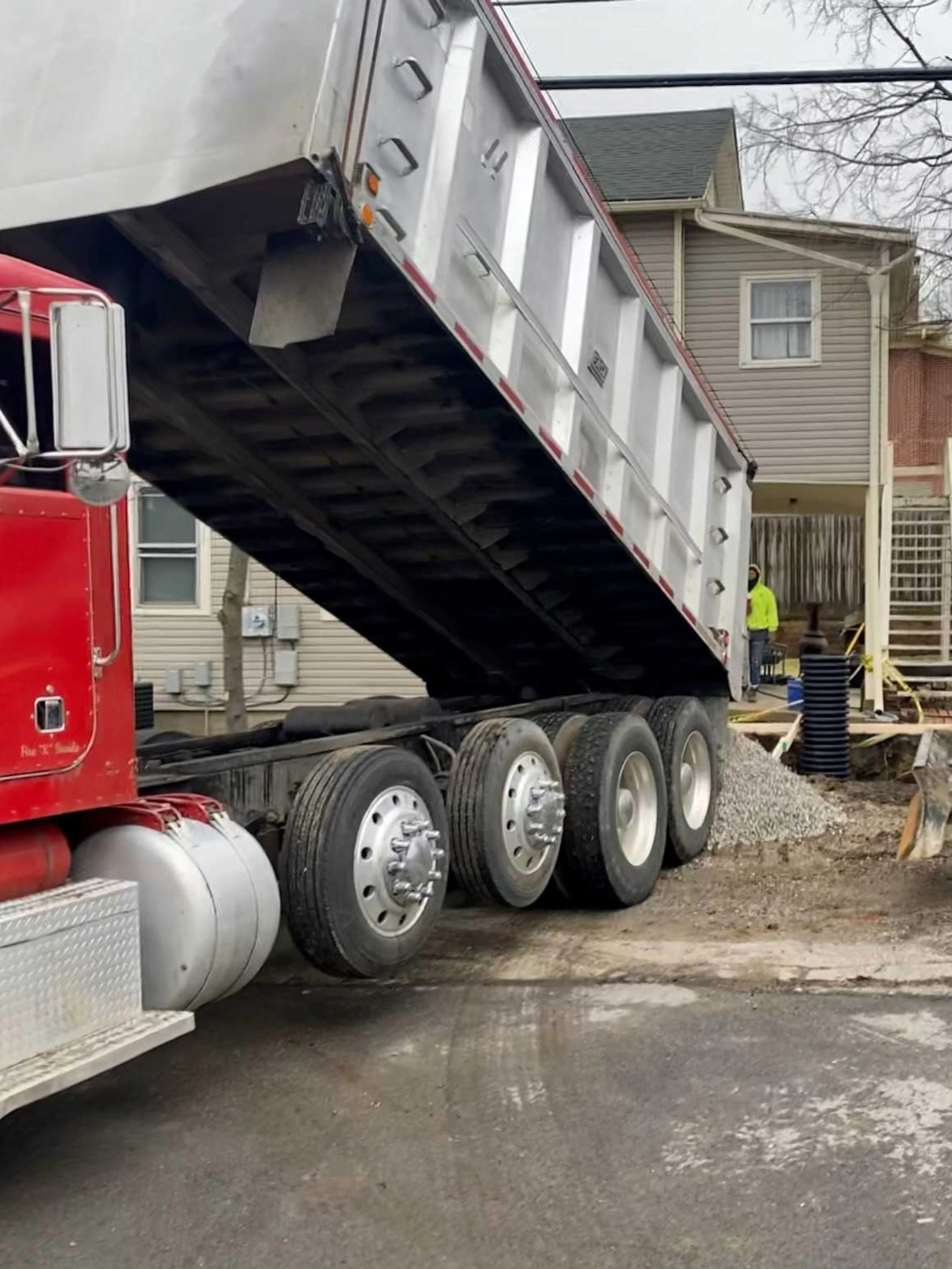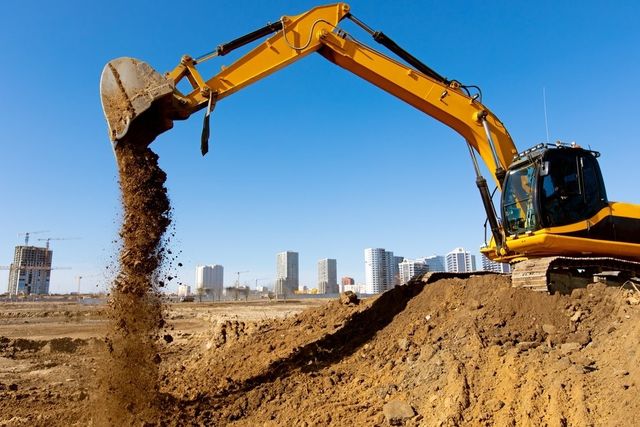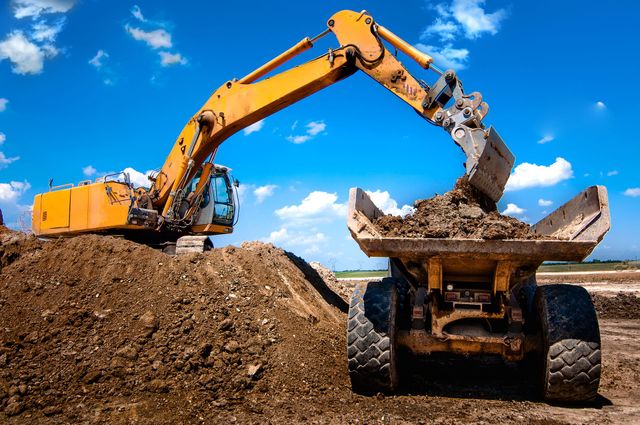Lancaster Excavation - Expert Excavation Providers in Lancaster, OH
Wiki Article
Revealing the Art of Excavation: Pro Tips for Safe and Productive Excavating
In the realm of excavation, the proficiency of productive and safe digging is an art form that requires precision, understanding, and adherence to recognized methods. As dirt is transformed and earth is relocated, the intricacies of excavation disclose themselves, demanding an eager understanding of tools, soil composition, safety methods, and environmental considerations. The experience needed to navigate these components successfully can imply the difference in between a successful excavation project and a possible catastrophe. By unraveling the layers of this intricate process, a globe of understandings and techniques waits for those seeking to boost their excavation abilities to new elevations.Significance of Correct Devices
To ensure the safety and security and efficiency of any type of excavation project, making use of the proper tools is paramount. Excavation projects vary in scope and complexity, ranging from little property landscape design work to large building and construction undertakings.Excavators are essential pieces of machinery in any digging operation. These versatile equipments come in numerous dimensions to match various task demands. Tiny excavators are excellent for smaller sized jobs, while larger excavators tackle much more extensive projects efficiently. Backhoes are an additional crucial tools kind, integrating the functions of a loader and an excavator in one device. They are valuable for jobs calling for adaptability and maneuverability.
Aside from excavators, other crucial tools consists of dump trucks, excavators, and trenchers. Dump vehicles are crucial for eliminating and delivering excavated materials, while plates are made use of for excavating slim and deep trenches. Excavators master jobs that call for pushing large amounts of soil or particles. By purchasing the ideal devices, excavation tasks can be completed securely, on time, and with accuracy.
Recognizing Soil Structure
A detailed grasp of dirt make-up is basic for carrying out excavation projects with precision and security. Understanding the various kinds of soil is crucial as it directly influences excavation methods, equipment choice, and total project effectiveness.Sand fragments are the biggest and supply great water drainage but offer little cohesion. Silt particles are smaller than sand yet bigger than clay, offering moderate drain and communication. Clay particles are the tiniest and provide high communication yet inadequate water drainage. Raw material, such as rotting plant material, affects dirt fertility and security.
Prior to beginning excavation, conducting dirt examinations to identify its composition and characteristics is important. This information aids in choosing the appropriate tools, applying safety and security procedures, and developing excavation strategies customized to the certain soil conditions - lancaster trenching. By comprehending soil make-up, excavation experts can enhance project end results while making sure safety and adherence to ideal methods
Security Steps and Procedures
Understanding soil composition is the foundation upon which precaution and protocols for excavation tasks are developed, ensuring the wellness of employees and the success of the venture. There are numerous essential measures that have to be applied to reduce threats and stop crashes. when it comes to safety and security throughout excavation.Firstly, prior to any kind of digging starts, an extensive examination of the site need to be performed to identify any prospective risks such as underground utilities, unsteady dirt problems, or neighboring frameworks that can pose a danger. It is important to have a competent person oversee the excavation Discover More process to guarantee that all security procedures are complied with purely.
Furthermore, all workers involved in the excavation has to be effectively trained in secure excavating techniques and the proper operation of equipment. By sticking to these safety steps and methods, excavation tasks can be completed effectively and without occurrence.
Reliable Excavation Preparation
When beginning on an excavation job, precise preparation is necessary to ensure performance, safety, and effective outcomes. Efficient excavation preparation includes numerous essential actions that are essential for the smooth implementation of the task.When the website assessment is total, the following step is to produce a clear timeline and timetable for the excavation activities. This consists of determining the series of tasks, devices requirements, and workforce allocation. Proper organizing aids avoid delays and ensures that the project remains on track.

Additionally, interaction among all employee is critical throughout the preparation stage. Clear directives, routine updates, and efficient control are crucial for a successful excavation job. By spending time and initiative in meticulous planning, excavation groups can considerably improve efficiency, lessen threats, and attain effective outcomes.

Managing Environmental Factors To Consider
With increasing emphasis on ecological sustainability in building and construction techniques, taking care of environmental considerations has become an essential facet of excavation projects. Excavation activities have the potential to impact the surrounding environment via dirt erosion, debris overflow, environment interruption, and contamination of water resources. To alleviate these risks, it is important to carry out ideal methods that focus on environmental management.
Moreover, appropriate waste monitoring is essential to avoid dirt and water contamination. Applying procedures for the disposal of dangerous materials, recycling of waste materials, and decreasing using damaging chemicals can substantially reduce the environmental influence of excavation projects. By integrating these methods right into excavation preparation and execution, building and construction firms can ensure that their jobs are not only safe and effective but additionally environmentally accountable.
Final Thought
Finally, mastering the art of excavation requires a complete understanding of correct tools, soil composition, precaution, and reliable preparation. By complying with these guidelines and considering ecological aspects, excavations can be carried out securely and effectively. It is important to prioritize safety and security and efficiency in every digging task to make certain effective outcomes.As dirt is transformed and planet is relocated, the intricacies of excavation disclose themselves, demanding an eager understanding of equipment, dirt composition, safety and security procedures, and ecological considerations.To ensure the security and efficiency of any type of excavation project, using the appropriate devices is paramount.A thorough grasp of dirt make-up is essential for executing excavation jobs with accuracy and safety. Comprehending the different types of dirt is important as it directly affects excavation approaches, equipment choice, and total project effectiveness. By understanding soil structure, excavation specialists can improve task outcomes while guaranteeing safety and security and adherence to best methods.
Report this wiki page